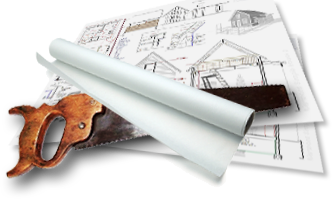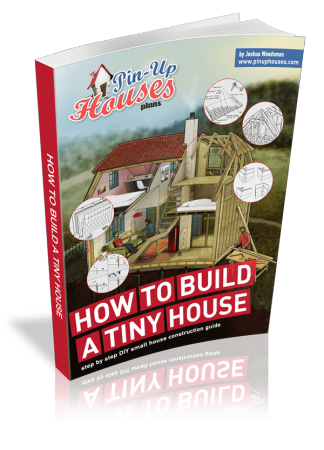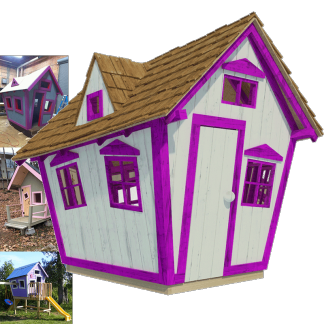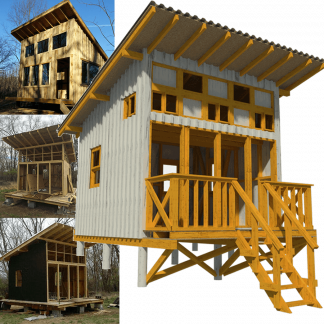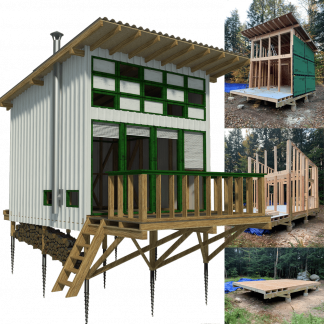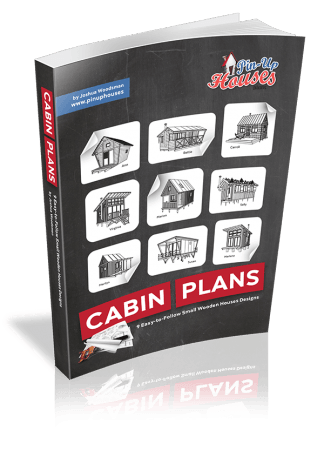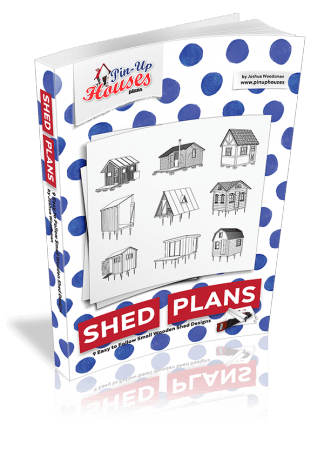So you’re scrolling through Pinterest at 2 AM again, looking at those perfect kitchen islands while your countertops from 2003 are basically archaeology exhibits. Your neighbor just spent $80,000 on a basement wine cellar while you’re still dealing with that bathroom vanity that’s smaller than a TV tray.
Most home improvements? Expensive mistakes. People blow their savings on trendy garbage that looks dated before the contractor even gets paid.
Some improvements are game-changers, though. The ones that make daily life better AND boost property value. Skip the Instagram nonsense. Focus on upgrades that solve real problems, save money monthly, and actually appeal to future buyers who aren’t idiots.
Key Takeaways
- Energy Independence Pays: Off-grid power systems eliminate monthly electric bills while making homes more valuable and resilient during outages.
- Function Over Fashion: Kitchen and bathroom upgrades should focus on usable space and professional-grade function rather than trendy finishes that date quickly.
- Smart Climate Control: Modern heat pump systems deliver year-round comfort while slashing utility costs compared to outdated HVAC setups.
- Strategic Budgeting: Start with infrastructure that saves money monthly, then add aesthetic improvements that complement functional upgrades.
- Real ROI Focus: Choose improvements based on daily impact and long-term savings rather than short-term design trends.
Why Update Your Home? Benefits That Actually Matter
Look, home improvements should make your life easier and your wallet fatter. That’s it. The right upgrades slash monthly expenses—the EPA estimates homeowners can save an average of 15% on heating and cooling costs by air sealing and adding insulation. But here’s what’s even better: an off-grid power system eliminates electric bills completely while making your home bulletproof against power outages.
I’ve watched too many neighbors deal with rolling blackouts while I’m over here with the lights on, the AC running, and zero monthly electric bills. That’s not just convenience—it’s financial freedom.
Functional stuff in kitchens and bathrooms transforms daily routines from frustrating to smooth. Modern fixtures, better storage, decent appliances. Plus, homes with updated systems sell faster because buyers know they won’t inherit a maintenance nightmare that costs $20,000 to fix.
Top Rooms to Focus Your Improvements
Target kitchen, bathroom, and living room upgrades for maximum impact on daily comfort and property value. These spaces affect how you live every day and what buyers notice first.
1. Kitchen Innovations
Ditch those appliances from the Clinton era. Get energy-efficient models from GE or Samsung that actually work instead of making weird noises and heating unevenly.
Quartz or granite countertops. Not because they’re pretty, but because they don’t stain when you spill wine or chip when you drop heavy pots.
Storage that makes sense: pull-out shelves, deep drawers. No more crawling into cabinets to find that one pot hiding in the back corner.
LED lights under cabinets so you can see what you’re cutting instead of guessing and hoping you still have all your fingers. The U.S. Department of Energy says LEDs can reduce wattage by around 75% compared to old incandescent bulbs.
A decent 40-inch electric range changes everything if you actually cook. Multiple burners, real oven space, heats evenly. Modern electric beats old gas every time; faster, cleaner, and easier maintenance.
Brush nickel or matte black cabinet hardware. Subway tile backsplash or something geometric if you’re feeling fancy. According to Remodeling Magazine’s 2024 Cost vs. Value Report, minor kitchen remodels return about 94% of what you spend, plus cooking becomes way less annoying.
2. Bathroom Upgrades
Low-flow toilets and rainfall showerheads. Sounds fancy, but really just means your water bill doesn’t make you cry every month.
Ceramic or vinyl tiles because they handle water, and you can actually clean them without special products and a prayer.
Smart mirrors that don’t fog up. LED lights around the vanity so you can see your face in the morning instead of applying makeup like you’re painting a barn in the dark.
Glass shower doors instead of those plastic curtains that stick to your leg and collect mold in weird places.
Suppose your bathroom feels like a closet with plumbing; a 72-inch bathroom vanity fixes that immediately. Double sinks, actual counter space, drawers that hold stuff. Modern vanities with real storage mean you’re not fighting for mirror time, and your toothbrush has somewhere to live.
3. Living Room Refreshes
Paint walls neutral tones like light gray or off-white for versatility that works with different furniture and seasonal decorating. Add layered LED lighting using floor lamps and dimmer switches for ambiance control throughout the day.
Replace bulky furniture with modular pieces that maximize space and flow. Update window treatments to energy-efficient cellular shades that insulate while providing privacy. Install built-in shelving for organization and display that eliminates clutter while showcasing personal items.
Multi-functional furniture like ottomans with storage serves dual purposes in smaller spaces. Living room improvements create an inviting atmosphere and enhance resale appeal, particularly in open-concept homes where the space seamlessly flows into the kitchen and dining areas.
Smart Home Technologies to Consider
Integrate smart technologies that improve comfort, efficiency, and security while adding the modern appeal that buyers expect.
Strengthen security with video doorbells like Ring and cameras from Arlo that provide real-time alerts and HD feeds accessible through phones. Smart locks from August or Schlage control door access and track activity logs for better home security.
For comprehensive climate control, modern heat pump condenser systems provide efficient heating and cooling with smart connectivity features. Heat pumps work by moving heat rather than generating it, typically achieving 300% efficiency according to industry data—delivering 3 times more heating or cooling than the electricity consumed while maintaining consistent temperatures year-round.
Install smart thermostats like Nest or Ecobee for remote temperature management and energy optimization that lowers HVAC costs by up to 15% according to the U.S. Department of Energy. Smart lighting systems from Philips Hue create customizable scenes and automated schedules throughout the house.
Voice assistants like Amazon Alexa or Google Assistant control compatible devices hands-free throughout living spaces. Smart speakers and streaming hubs integrate audio and visual control for entertainment systems.
Best Home Improvement Ideas for Every Budget
Real improvements work within your actual budget while delivering measurable results. Match your upgrade choices to what you can afford while focusing on projects that add genuine value.
1. Cost-Effective Upgrades
Paint. That’s it. Slap some fresh paint on the walls and watch the place transform for under $500 per room. Stick with boring neutral colors because nobody wants to buy a house that looks like a unicorn exploded.
Swap out the brass handles from the Bush administration for brushed nickel or matte black cabinet hardware. Takes an afternoon and costs around $200.
LED bulbs everywhere. The U.S. Department of Energy says they can reduce wattage by around 75% compared to those old bulbs that heat up your house. Plus, they last forever, so you’re not climbing ladders every month changing burnt-out bulbs.
Peel-and-stick backsplashes if you’re renting or commitment-phobic. Looks decent, comes off easy, doesn’t require a tile saw or three weeks of dust.
2. Mid-Range Makeovers
Upgrade flooring from tired laminate to engineered hardwood or luxury vinyl planks—widely available from suppliers like Shaw or Mohawk. These materials look high-end but cost way less than solid hardwood while being more durable for high-traffic areas.
Bathroom fixture upgrades like rainfall showerheads and modern vanities add comfort and resale value.
Smart thermostats and video doorbells from brands like Nest or Ring boost energy savings and security features. New lighting fixtures in dining and family rooms create a contemporary appeal without major electrical work.
3. Luxury Improvements
Transform living spaces with premium upgrades that deliver long-term value. Custom kitchens featuring quartz countertops and high-end appliances like Sub-Zero refrigerators create cooking spaces that actually inspire meal preparation instead of takeout ordering.
In-floor radiant heating in bathrooms and master suites provides personalized comfort that makes cold mornings bearable. Outdoor living areas with built-in grills, fire pits, and pergolas extend usable square footage while creating entertainment spaces that keep you home instead of spending money elsewhere.
Whole-home automation systems for lighting, security, and climate control managed from smartphones offer the convenience that modern families expect.
Outdoor Home Improvement Ideas
Outdoor improvements boost home value and create usable space for relaxation and entertainment. Projects range from quick curb appeal fixes to complete backyard transformations.
Backyard Transformations
Want a functional outdoor space? Add a deck or patio with composite decking or stone. These aren’t just pretty—they extend your usable square footage so you stop spending money going out for entertainment.
Fire pits, pergolas, and built-in seating. Define different zones for different activities. Choose low-maintenance landscaping with native plants because nobody wants to spend weekends battling weeds and watering exotic plants that die anyway.
Curb Appeal Boosters
Make homes look inviting with immediate visual impact projects. Repaint front doors with bold colors, install modern house numbers, and update exterior lighting for welcoming first impressions that stick.
Fresh mulch, trimmed shrubs, and seasonal planters with flowers like petunias add neatness and color. Replace dated mailboxes and upgrade walkway surfaces with stone or pavers for polished entries that suggest well-maintained properties.
Tips for Planning and Executing Your Projects
Effective planning improves outcomes while controlling costs and minimizing disruption to daily routines.
- Define goals first—energy efficiency, comfort, or resale value—before selecting specific projects. Assess budgets to determine whether you’re tackling cost-effective upgrades, mid-range updates, or luxury improvements. Factor in materials, labor, and 20% contingency costs for unexpected issues.
- Research local regulations for permits or HOA approvals, especially for structural, electrical, or outdoor changes. Create detailed project plans listing required materials, tasks, and realistic timelines. Schedule phases to reduce disruption in high-use spaces like kitchens and bathrooms.
- Compare DIY versus professional installation based on required skills. Complex plumbing, electrical work, or whole-home automation typically needs licensed experts, while painting or hardware replacement suits DIY approaches.
- Get multiple contractor quotes, request references, and verify insurance for larger jobs. Order fixtures or smart devices early to avoid shipping delays or supply shortages that derail project timelines.
Bottom Line
Smart home improvements solve real problems while building long-term value. Focus on infrastructure that saves money monthly, then add aesthetic touches that complement functional upgrades. Energy independence, efficient systems, and functional spaces aren’t trendy—they’re essential for modern living.
The right improvements make daily life dramatically better while positioning homes as smart purchases for future buyers. Skip Instagram-perfect projects that drain bank accounts and choose upgrades that deliver immediate benefits and lasting returns.
Frequently Asked Questions
Which home improvements give the best return on investment?
Kitchen and bathroom functional upgrades typically return 60-80% of costs, while energy systems provide immediate monthly savings plus increased home value. Focus on improvements that solve daily problems rather than purely aesthetic changes.
How much should I budget for major home improvements?
Plan 10-15% of your home’s value for major systems upgrades and 5-10% for kitchen/bathroom improvements. Always add 20% contingency for unexpected issues during renovation projects.
Should I do home improvements myself or hire professionals?
DIY works for cosmetic updates like painting and hardware replacement. Hire licensed professionals for electrical, plumbing, HVAC, and structural work to ensure safety and warranty coverage.
What home improvements should I avoid?
Skip highly personalized features, trendy color schemes, and luxury finishes that won’t appeal to future buyers. Avoid improvements that exceed your neighborhood’s value range.

